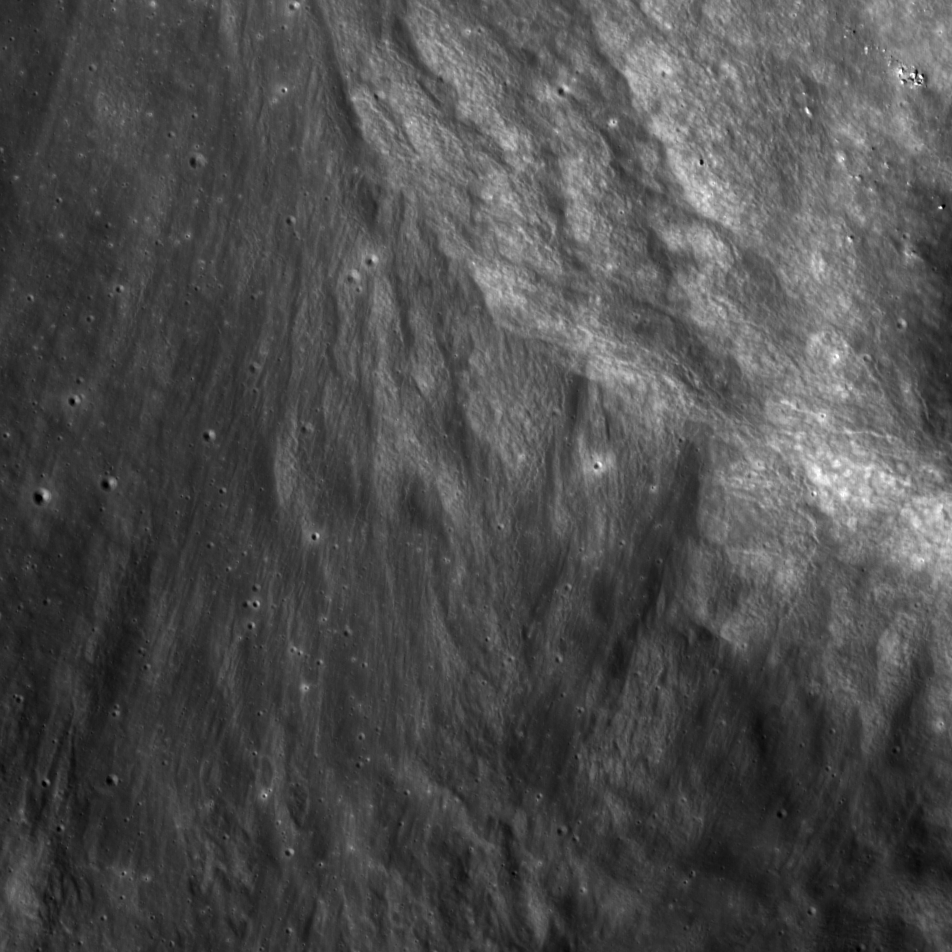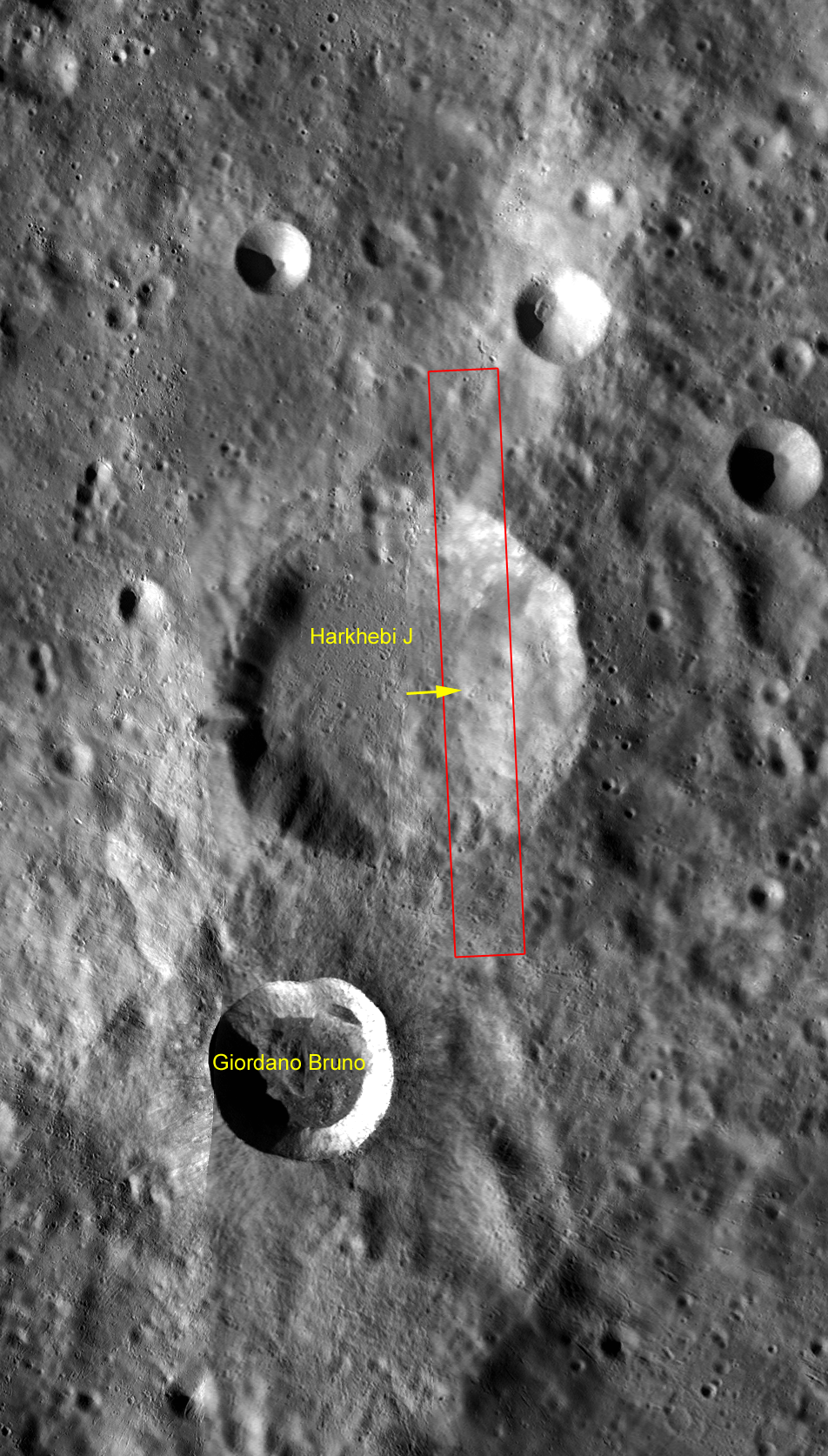
Giordano Bruno, the 22 km crater whose ejecta drapes Harkhebi J, is at most 10 million years old. Because these features are so young, they are preserved almost as though the ejecta ray landed here yesterday. The Featured Image location is aproximately 5 crater radii (55 km) away from the impact center, but the effects of the original impact are clearly visible; the momentum from the ejecta is visible as striations in the western half of the image.
The ejecta was traveling upwards of 600 km/hr when it began to etch the surface, and when the materials finally came to rest, the evidence of the original motion was frozen in time.

Many patterns in ejecta from Giordano Bruno crater can be seen throughout the full NAC frame below. These varied beautiful patterns relate to ejecta velocity and angle, as well as the material properties of the target.
What would blocky ejecta look like? What would fine granular ejecta look like? The blocky ejecta would pepper the ground with secondary craters, while the granular ejecta would blast the existing surface smooth and flow like an avalanche. There is evidence of both in the full NAC frame below!
Published by Aaron Boyd on 20 August 2014